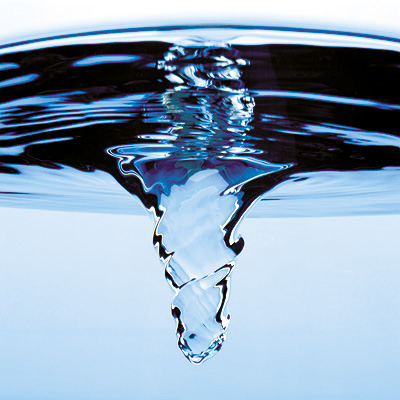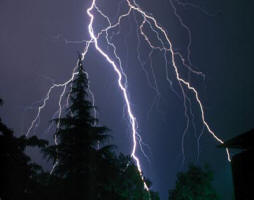 European waters: current status and future challenges - a synthesis
European waters: current status and future challenges - a synthesis
This report is a synthesis of the main messages from nine EEA reports dealing directly or indirectly with water ecosystems or the pressures acting upon them. It is the last in the series of reports published by the EEA in support of water year 2012. It seeks to first provide an overview of the state of Europe's waters and the pressures acting on those waters. It then looks in greater detail at the economic and social factors driving these pressures, and concludes with a summary of the societal and policy challenges that must be met if water is to be managed sustainably.
The Europe 2020 strategy is the European Union's strategy for economic growth in Europe over the next decade. This strategy envisages the development of a 'greener', more environmentally friendly economy in Europe. Sustainable water management is a critical element of this green economy because healthy and resilient ecosystems provide the services needed to sustain human well‑being and our economy. For this reason, we need to ensure that other economic sectors, such as agriculture, energy and transport, also adopt management practices that can keep water ecosystems healthy and resilient.
Some improvements in water quality have been made in the past two decades with e.g. the implementation of the urban waste water treatment directive. Nevertheless at present, the ecological status of water ecosystems is not good enough. Under the Water Framework Directive, countries were obliged to publish so-called River Basin Management Plans, which detailed the status of the water bodies in their countries. The results of the first round of these River Basin Management Plans show that more than half of Europe's surface water bodies are in less than good ecological status.
These findings corroborate the reporting under the Habitats Directive, which details the conservation status of habitats and species dependent on water in Europe. Over two thirds of all river and lake habitats and inland water species are in unfavourable conservation status.
Chemical status is another cause for concern. About 25 % of all groundwater bodies across Europe are in poor chemical status. High levels of different chemicals, e.g. nitrate in groundwater bodies, are the most frequent cause of bad status. This poor status is the consequence of a range of pressures driven by human activities in different economic sectors.
EEA data for the last decade show that water quality has improved as the concentration levels of oxygen‑consuming substances and ammonium in water has declined. These pollutants are closely related to the treatment of urban waste water, and the downward trend is a sign of improved treatment following the implementation of the Urban Waste Water Treatment Directive. If this trend continues, and if the Urban Waste Water Treatment Directive is fully implemented, it is likely that water quality levels usually associated with good ecological status will be achieved at least within the next 10 to 15 years.
However, other pollution pressures are on a less positive trend. Pressures from 'diffuse' sources in particular are continuously high. These diffuse pressures are largely driven by nitrates, applied with agricultural fertilisers, which run off into water bodies. If the current trend continues, concentrations of nitrates in water are unlikely to meet good status concentrations within the next 10 to 15 years.
Hydromorphology is another important pressure causing problems for Europe's water bodies. Hydromorphology describes the changes made to the natural shape and flow of water bodies by river straightening, dredging, dams, dikes, barriers and water abstraction. These changes destroy habitats for water plants and animals, making it difficult for them to thrive, feed and breed, and it prevents migratory species from moving along the rivers.
The third and equally important problem area is the 'quantitative' status of the water ecosystems. Quantitative status refers to the volume of water present in a water body at any given time. Problems in quantitative status can include phenomena like droughts, floods and water scarcity. A number of sub-surface groundwater bodies are in less than good quantitative status, for example because of a drop in the groundwater table. Climate change is an important driving force for both floods and droughts. On top of the increasing drought risk over-abstraction of water has led to water scarcity becoming a widespread problem for many river basins in Europe, in particular around the Mediterranean.
--
Published by
- EEA (European Environment Agency)
- Published: Nov 26, 2012
Content
| Contact information | n/a |
|---|---|
| News type | Inbrief |
| File link |
http://www.eea.europa.eu/publications/european-waters-synthesis-2012/at_download/file |
| Source of information | European Environment Agency (EEA) |
| Keyword(s) | EU-WFD, River Basin Management, nitrates, climate change, water scarcity, drought, river basins, floods, dredging, Hydromorphology, water treatment |
| Subject(s) | ANALYSIS AND TESTS , CHARACTERISTICAL PARAMETERS OF WATERS AND SLUDGES , DRINKING WATER , DRINKING WATER AND SANITATION : COMMON PROCESSES OF PURIFICATION AND TREATMENT , ENERGY , HEALTH - HYGIENE - PATHOGENIC MICROORGANISM , HYDRAULICS - HYDROLOGY , INDUSTRY , INFORMATION - COMPUTER SCIENCES , MEASUREMENTS AND INSTRUMENTATION , METHTODOLOGY - STATISTICS - DECISION AID , NATURAL MEDIUM , POLICY-WATER POLICY AND WATER MANAGEMENT , PREVENTION AND NUISANCES POLLUTION , RIGHT , RISKS AND CLIMATOLOGY , SANITATION -STRICT PURIFICATION PROCESSES , SLUDGES , WATER DEMAND , WATER QUALITY |
| Relation | http://www.semide.org/initiatives/dce |
| Geographical coverage | n/a |
| News date | 29/11/2012 |
| Working language(s) | ENGLISH |
 you are not logged in
you are not logged in





